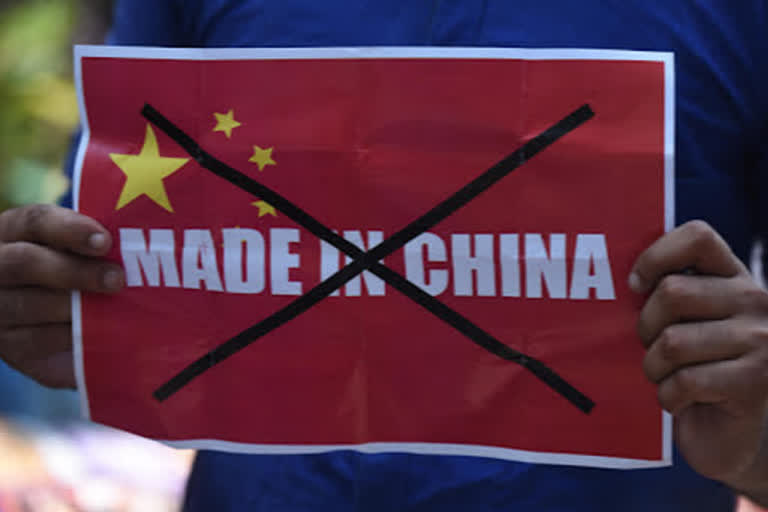New Delhi:With anti-China rhetoric and calls for the boycott of Chinese goods reaching a crescendo in India following the death of 20 Indian Army personnel in a violent border clash last week, China’s state mouthpiece Sunday called for calm while pointing out that Indians can hardly afford to not live with goods made in the Asian giant’s plants.
"Only with peace and tranquillity at their borders can the two heavyweight emerging Asian countries forge closer trade ties and economic links that will benefit both peoples,” said an article headlined “India must not let border scuffle fray economic relations with China" in the Global Times, an English daily known for its sharp espousal of Beijing’s viewpoints.
"The two nations should do all in their power to prevent the latest border incident from worsening and seriously disrupting bilateral relations," it stated.
As many as 20 Indian army personnel, including a colonel, were killed during a violent physical clash with Chinese troops at Galwan Valley in Ladakh on the intervening night of June 15-16. Though New Delhi and Beijing have been engaging in military and diplomatic dialogue to de-escalate tensions, public anger in India has been rising against China with even a union minister calling for a ban on Chinese food!
Social media has gone viral with videos of Indians breaking China-made television sets among others.
This is the first time in 45 years that there have been fatalities along the 3,488-km-long India-China border.
Describing the confrontation in Ladakh as “an unfortunate clash”, Sunday’s Global Times article stated that it “should not be used by politicians and conspiracy theorists, both inside and outside India, to arouse nationalism and hatred toward China - a giant neighbour that India relies on to grow its economy”.
“However, many Indian television anchors and newspaper opinion columnists have been seen trying to escalate the border scuffle, with the most belligerent demanding that India give China a "bloody nose",” it stated.
“We hope Indian people won't be fooled by the radical elements in their country. India needs China, economically and geopolitically.”
According to External Affairs Ministry figures, of the total India-China bilateral trade volume of $95.54 billion, India’s exports were $18.84 billion. India is the seventh-largest export destination for Chinese products and the 27th largest exporter to China. India-China trade during the period January to July 2019 stood at $53.3 billion. India’s exports to China were $10.38 billion, a decline of 5.02 per cent, and China’s exports to India were $42.92 billion, a decline of 2.51 per cent. India’s major export items included cotton, copper and diamonds/ natural gems, while major Chinese exports include machinery, telecom and power-related equipment, organic chemicals, and fertilisers.
Stating that “China provides a plethora of opportunities to India”, the Global Times article stated: “Of the top 30 so-called unicorn start-up enterprises in India, 18 have Chinese investments. And many daily necessities enjoyed by Indians, from household colour TVs, microwave ovens and air conditioners to the most fashionable mobile phones and laptops, are produced by China. With both affordable prices and good quality, Chinese items are difficult to replace.”
Calling upon India to not “fire up geopolitical tensions in Asia”, the article stated that “New Delhi has 100 reasons to nourish good and mutually beneficial relations with China, as neither can move their territory away from the other”.
The latest India-China border flare-up comes on the heels of the 73-day face-off between troops of the two sides in Doklam on the Indian-Bhutan-China international trijunction in 2017. In the face of this, Prime Minister Narendra Modi and Chinese President Xi Jinping met on the margins of the Shanghai Cooperation Organisation (SCO) Summit in Kazakhstan that same year and both leaders agreed that differences between the two countries should not be allowed to become disputes – now diplomatically dubbed as the “Astana consensus”.
To ostensibly further boost bilateral ties, Xi hosted Modi for an informal summit in 2018 in Wuhan, the very city where the current Covid-19 pandemic broke out, and the Prime Minister hosting the Chinese President for a similar summit at Mamallapuram near Chennai last year.
With the latest flare-up in Ladakh, critics are questioning the personal chemistry between Modi and Xi, saying where the “Wuhan Spirit” and the “Chennai Connect” between the two have gone.
Apart from the global criticism of China for the coronavirus outbreak, Beijing is also on the edge over New Delhi cosying up to Washington amid a China-US trade war.
India and the US, along with Japan and Australia, are also part of a quad that seeks to ensure peace and prosperity in the Indo-Pacific, a region that stretches from the east coast of Japan to the east coast of Africa. This assumes significance given China’s growing footprint in this region and belligerence in the South China Sea.
Also Read:Indian Army changes rules of engagement on LAC with China
